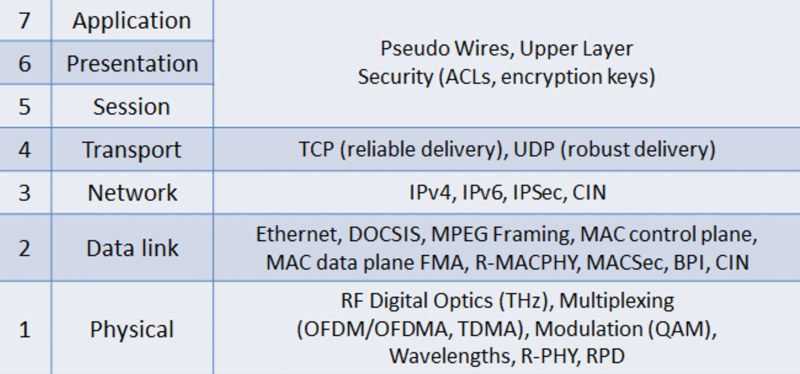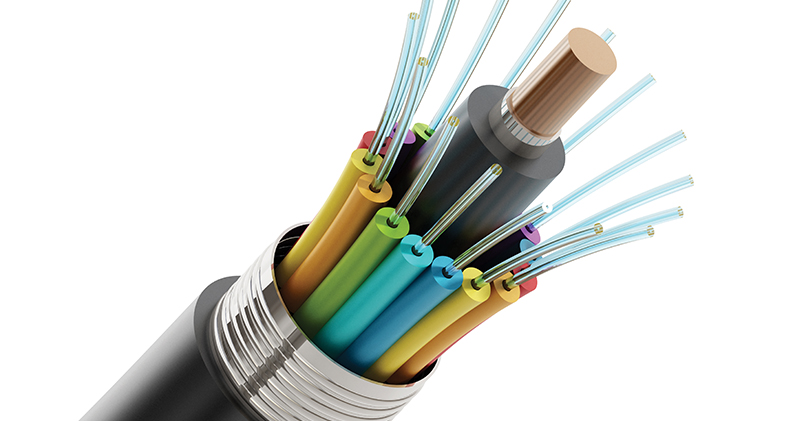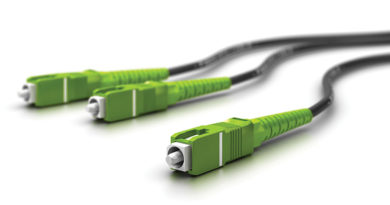Optical Networking for Future Network Engineers
By Eric Eide and Steve Harris
Modular headend architecture (MHA) provides service delivery enhancements, allowing facility components to operate independently or even a deep optical access network closer to the subscriber. Moving components closer to the subscriber using optics improves overall network metrics, enhancing the customer experience. MHA first came to life with a modular cable modem termination system, or M-CMTS, separating CMTS functions. The initial M-CMTS (MHAv1) offered a downstream external physical (PHY) interface (DEPI) over a converged interconnect network (CIN). However, external interfaces require time synchronization, and DOCSIS timing interface (DTI) was developed. Later the upstream external PHY interface (UEPI) was added, supporting two-way communications. During this time many operators were transitioning their CMTSs to a converged cable access platform (CCAP), serving data and video simultaneously. The combination of DEPI and UEPI (MHAv2) is commonly referred to as remote PHY (R-PHY), a distributed CCAP architecture (DCA) shown in Figure 1. DCA is an instantiation of distributed access architecture (DAA).

Figure 1. Distributed CCAP architecture
Today, engineers who work in the access network will be responsible for maintaining multiple layers of a network. A model that provides clarity in networking is the open systems interconnect (OSI) model shown in Figure 2. The OSI model offers a layered approach to network and troubleshooting.

Figure 2. OSI model
A bottom-up approach to maintaining a DCA or DAA R-PHY network is to start with the PHY layer. The PHY layer here is responsible for digital fiber signaling in THz, as opposed to analog fiber in an HFC network. Engineers must maintain optical power budgets, as well as design criteria for the PHY layer to operate correct. Furthermore, healthy orthogonal frequency division multiplexing (OFDM) and quadrature amplitude modulation (QAM) operation is vital. Building on the PHY layer is the data link layer, responsible for Ethernet and DOCSIS packet framing. Engineers will be responsible for Ethernet frame performance testing, as well as maintaining the DOCSIS media access control (MAC) functions. MPEG framing and packetization also occur here. Besides the data plane, the MAC is responsible for control plane functions. Besides R-PHY, CableLabs’ new flexible MAC architecture (FMA) allows industry technologists to choose a remote MACPHY (R-MACPHY) variant.
Moving further up the OSI model to the network layer, Internet Protocol (IP) is a key component of the access network, whether that is version 4 or 6. At the transport layer TCP provides reliable delivery of services over a DAA/DCA, while UDP is more robust with less overhead providing unreliable delivery of services. Engineers are responsible at this layer to maintain TCP and UCP throughput.
The upper layers of DAA/DCA have many additional responsibilities like pseudo wires, security, etc. In the upper layers, the network engineers must be aware of access control lists (ACLs) when they are troubleshooting the network. In addition, engineers must understand and verify security encryption keys. For example, when there is connectivity the access nodes (e.g., remote PHY device/RPD) are able to ping across the operator’s network. However, if data is not being passed, the network engineers will evaluate the syntax processing of the data passed down from the application layer or data passed up from the session layer. The DAA/DCA application layer will generally be where the customer begins to notice a service disruption. For this reason, it is important to operate a stable network, as reliability is more essential to our customers than ever before. One of the largest concerns for our customers is security at all layers of the OSI model. Engineers must provide verification of encryption keys during a DAA/DCA repair, a top priority in effective network management.
The road to 10G has been in industry headlines for much of 2022 and beyond. As more cable operators begin to deploy DCA/DAA and extend digital fiber closer to the customer, they will turn legacy functions into cloud services. The foundation of this transition is the overhaul in the access network between the CCAP core and the digital fiber nodes (DFNs), which is referred to as the CIN. The change from RF interconnects in hubs and headends (facilities) to digital fiber endpoints is a dramatic shift in architecture. The engineers will need the CIN to support legacy core boxes as well as cloud-based cores and the data center fabrics. Ultimately the CIN will be a digital, IP routed network that will connect all headends and data centers to the access network. Operations can start CIN deployments with single layer networks, offering a simple design and deployment. Less facility and data center rack space is required for single layer CIN, but there are limitations on wide scale deployments. The spine-leaf architecture is much more scalable and better suited for larger deployments and big data center operations. The CIN may be deployed as a distributed architecture or centralized structure. Only distributed architecture moves Layer 2 and Layer 3 to the access network and will fully unlock the benefits of DCA/DAA, however the flexibility engineers see in the CIN is one of the major benefits of the change.
The elimination of analog intensity modulation (AIM) optics and hardware from the facilities will provide the opportunity for a fresh look at training engineers and technicians in the CIN architecture. Network fundamentals (e.g., SCTE’s Network Specialist / CompTIA Network+) and the understanding of the OSI model are more essential today when engineers and technicians start their careers in broadband. The network will continue to evolve with the future deployment of DOCSIS 4.0 technology and offer more products and services across the CIN. This evolution will require a deeper understanding of the network as an interconnected organism to resolve network incidents that may be more unique and complex in the CIN. Starting early with training technicians and network engineering who work with customers using applications (OSI Layer 7) in their home will only assist in providing a great customer quality of experience (QoE) on the CIN. In addition, proper training will prepare the next generation of engineers to continue to deploy new technology in the future!

Steven Harris
VP Global Market Development,
SCTE® a subsidiary of CableLabs®
 Eric Eide,
Eric Eide,
Executive Director for Talent and Learning Engagement,
Comcast Cable
He supports network and reliability engineering organizations within Comcast with a focus on career acceleration and mobility. Eric has worked in the learning and development function for Comcast since 2008. Before 2008 Eric worked as a network maintenance leader as well as leading installation and repair teams for Comcast. Eric has 24 years of industry experience.
Figures provide by authors.
Shutterstock



